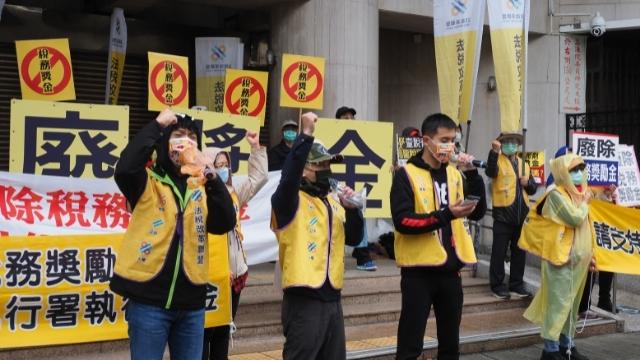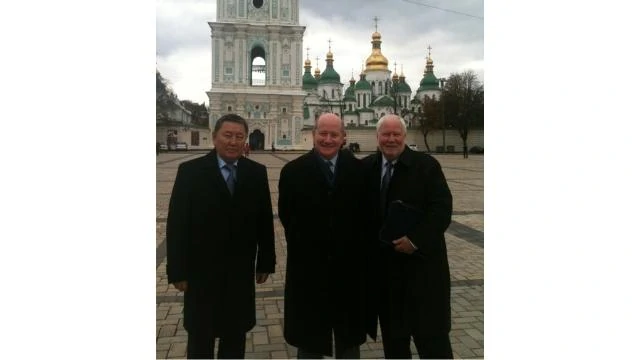03/09/2022 MASSIMO INTROVIGNE
Intolerance becomes discrimination, and discrimination becomes persecution. This is what happened to Tai Ji Men.
by Massimo Introvigne*
*A paper presented at the webinar “Tai Ji Men: 25 Years of Discrimination,” co-organized by CESNUR and Human Rights Without Frontiers on March 1, 2022, United Nations Zero Discrimination Day.

In 2011, I served as Representative of the OSCE (Organization for Security and Cooperation in Europe) for combating racism, xenophobia, and intolerance and discrimination against Christians and members of other religions. There were two other representatives for combating anti-Semitism and Islamophobia. “Other religions” meant all religions other than Judaism and Islam.
The OSCE is the largest organization dealing with international security and human rights, apart from the United Nations. Its participating states include Canada, the United States, all countries in Europe and in the former USSR, and Mongolia.
At the conclusion of an OSCE ministerial meeting in 2011 in Lithuania, Mgr. Dominique Mamberti, at that time Secretary for the Holy See’s Relations with the States, now a cardinal, praised “the outstanding work that was done” by my office. He particularly referred to the conference we organized in Rome on September 12, 2011, on “Hate Incidents and Crimes Against Christians” as “a successful and hopeful event”.
At the Rome conference, I introduced the “Rome Model,” a three-stage model that predicts a slippery slope from intolerance to discrimination and from discrimination to persecution. The OSCE and other international bodies, as well as scholars, quoted repeatedly the Rome Model in the years after the event.

The focus of the Rome Model is on Christians, but it is valid for all cases where what I called the spiral of intolerance is at work. Intolerance is a cultural phenomenon. A group is ridiculed through stereotypes and depicted as malignant, evil, an obstacle to happiness and social harmony. Very often, intolerance is spread by manipulating the media.
In the Rome Model, discrimination, a legal process, soon follows intolerance. There is a logic in this progression. If a group or organization threatens society and public harmony, society needs legal and administrative measures against it.
The third stage of the spiral of intolerance leads from discrimination to persecution. Here again, there is a method in the madness. If discrimination fails to suppress a group or organization regarded as dangerous, governments may feel entitled to act more decisively, put people in jail, and take other radical measures.
The spiral of intolerance—from intolerance to discrimination and from discrimination to persecution—applies to many groups. Jews in Nazi Germany were attacked through books and caricatures and then discriminated by the laws; and in the end, Auschwitz came.

Combating discrimination against Roma and Sinti (so-called “gipsy”) minorities was a key part of my OSCE mandate. In many countries, they are first subject to intolerance through stereotypes (“they are all thieves”), then targeted by discriminatory laws (special passports, problems in obtaining documents), and very often end up becoming victims of persecution.
The Tai Ji Men case is another example of how the spiral of intolerance works. Prosecutor Hou tried to put the public opinion on his side by depicting Tai Ji Men as a sinister group defrauding its members and endangering society. Two of the tools he used for his campaign of intolerance were establishing an “association of victims” of Tai Ji Men, later revealed to be a fraud, and accusing Dr. Hong Tao-Tze, the leader of the movement, of “raising goblins.” This bizarre accusation was of course false, but it created further intolerance. Children of Tai Ji Men families reported that they had been bullied at school based on the apocryphal tale about goblins.
Intolerance is followed by discrimination. While he manipulated media to spread slander against Tai Ji Men, Prosecutor Hou called for more administrative discrimination. In 1997, overstepping his authority, he wrote to the Ministry of Interior demanding the dissolution of Tai Ji Men. He also wrote to the Public Works Departments of Taipei City and Taipei County asking that water and electricity supply to Tai Ji Men be terminated. While these blatant attempts at discrimination were not successful, another one was. As he later testified, tax collector Shih Yue-Sheng (1949–2020) was summoned by Prosecutor Hou and pressured to commit perjury. He should falsely claim that he had investigated Tai Ji Men (which he didn’t) and had ascertained that it was a “cram school,” i.e., a school providing students rapid tuition, with the consequence that the money given by dizi (disciples) to their master in the so-called “red envelopes” was a taxable tuition fee rather than a non-taxable gift. This started the infamous Tai Ji Men tax case.

Just as intolerance is followed by discrimination, discrimination is followed, and sometimes accompanied, by persecution. Not only did Prosecutor Hou slander Tai Ji Men in the media (intolerance) and tried to cut them even out of public water and electricity (discrimination), but he kept Dr. Hong in detention for 159 days between 1996 and 1997, raided Tai Ji Men academies and private homes of dizi, and tried to intimidate the defendants and the witnesses. Later, the tax case led to violence not on persons—although one 60-year-old woman peacefully protesting was mistreated by the police—but against the sacred land of Tai Ji Men, which was seized, unsuccessfully auctioned, and confiscated in 2020 based on an ill-founded tax bill.
Intolerance, discrimination, persecution: Tai Ji Men experienced them all. It is unfortunately quick and easy to pass from intolerance and discrimination to persecution and violence. As a ball rolling down on an inclined plane, which is slow in the beginning but then speeds up and becomes unstoppable, intolerance and discrimination if not halted on time become persecution. This is why we should stop discrimination against Tai Ji Men now.
Source: Bitter Winter

